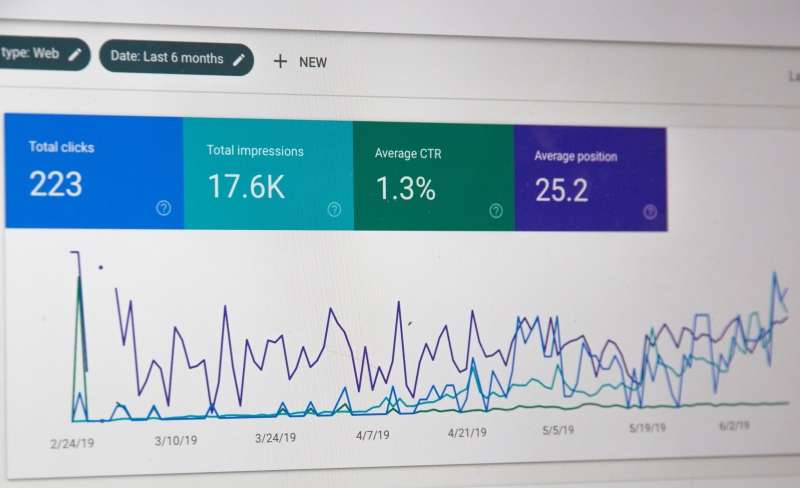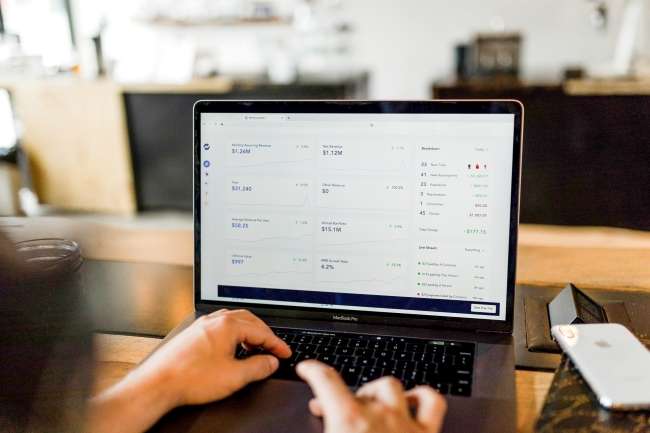Basic metrics for evaluating PPC in Google Ads
To ensure the best results from PPC campaigns, regular management and evaluation is necessary. A lot of people think they'll run ads and don't have to worry about anything else. Unfortunately, it just doesn't work that way. If you want to get relevant customers and increase sales, you need to take care of the campaign. Today we will show you the basic evaluation metrics that are worth monitoring to make campaigns more effective.
Display

When a user sees your ad, it counts as an impression. In Google Ads, you can see how many impressions your ads have received, but tracking the number of impressions alone doesn't measure the success of your campaign, because you can't tell how relevant those users are.
However, the important metric is impression share. This metric measures the number of impressions your ad received versus the number of impressions it could have received. A simple view share calculation is:
number of views obtained / total number of views available
Impression share is measured as a percentage and is a great way to indirectly measure the success of your campaign against your competitors. For example, if 100 users searched for a keyword and your ad received 30 impressions, the impression share would be 30% and the remaining 70% would be received by your competitors. In Google Ads, you can also directly find the lost impressions metric.
So how can we increase view share?
The two main factors that affect your impression count, and therefore impression share, are:
-
Ad Position – If your ads aren't appearing on the first page of a search, you naturally won't get as many impressions. There are many factors that affect ad position, such as Quality Score and Max CPC. If you have a low-quality score, focus on adjusting the ads and check the relevance of the landing page, if you offer a low CPC, consider whether it is worth increasing it.
-
Budget – If your campaign is limited by budget, your ads will no longer appear in search results, reducing your impression share. If so, consider increasing your daily budget to keep up with the competition.
Top and top view share
The very top position means the very first result in a search, and all ads that appear above the organic search results are referred to as the top display. These ads have the best chance of being clicked because they are the first the user sees.
Click Through Rate (CTR)
Another key metric for measuring the success of campaigns is the click-through rate. Click-through rate, or CTR, shows how many people who see your ad actually click on it. The cost per click calculation is:
Total number of ad clicks / total number of ad impressions *100 = %
For a campaign with a total of 100 clicks and 1250 impressions, the CTR is 8%. This is considered a good CTR value, however, CTR is very individual to the industry of the company and the type of campaign. Search campaigns are expected to have a much higher CTR than, for example, content campaigns.
Many businesses consider a high CTR to be the most important thing and measure the success of their campaigns based on it. But it is much more important to reach a relevant audience with relevant and non-misleading advertising messages. The key to success is finding the right balance of affordability and relevance for your campaign. You should always start by evaluating your target. Do you want as many people as possible to visit your website? This is what you achieve when you focus on achieving a high click-through rate. If you want to increase the number of visits that are likely to convert, sacrifice a high CTR and instead focus your budget on those that represent a better ROI.
Conversion
Conversions are probably the most important thing to track in your campaigns. Clicks, impressions and average cost-per-click are some of the most common ways to measure campaign performance, but conversions are key to getting a sense of how your efforts are actually impacting your business's bottom line. A conversion is an event or action that takes place on your website that you have chosen to track for the purposes of your PPC campaign. When choosing a campaign, you should choose something that has value for your business and matches the goals for which you launched the campaign.
There are a large number of conversions that you can set up and track on your website.
Conversion types:
-
Purchase on the website
-
View page
-
Sign up for the newsletter
-
Phone calls
-
Installing the application
-
Offline conversion
Conversion ratio
Once you've set up the right type of conversion tracking for your campaign, you'll be able to track other key metrics. One such metric is the conversion rate. While tracking conversions will tell you how many users completed your goal, it doesn't give you a clear picture of how your campaign is doing. If you compare two campaigns that each got 4 conversions, that doesn't mean they're performing equally. While one campaign could get 4 conversions from 500 clicks, another could get the same result from only 20 clicks.
Conversion rate is the percentage of clicks your campaign received that led to a goal being met. Tracking your conversion rate over time can give you a clearer picture of how your campaign is performing and allow you to make key decisions about what kind of adjustments you need to make. By only tracking conversions, you don't take into account that the drop in conversions can come from issues like short-term campaign pauses, CPC increases, and click-through drops.
How can I improve my conversion rate?
A low conversion rate can come from many reasons, and it's important to always test any big changes to avoid this. The first step might be to run A/B tests to see what effect certain changes have.
-
Make sure all your ads are relevant and accurately describe the service you're offering. This will reduce the number of people who click on your ad and leave within seconds because they realize you don't offer what they're looking for.
-
Regularly review your search queries and add negative keywords to prevent ads from appearing on irrelevant queries.
-
Use the right landing page. What page do users go to when they click on your ad? Is it just a general page on your website, or maybe a home page? Users are more likely to stay on your site when you bring them to the specific page of what they are looking for. You should also ensure that the landing page has a clear and visible call to action. The overall process of completing a conversion goal should be as simple, quick and clear as possible.
Cost of sales ratio (CSO)
Another useful metric to track once you have conversions set up is the cost-to-turnover ratio. The name is quite self-explanatory - it expresses what percentage of the image that we got thanks to advertising, we paid for advertising. The formula for calculating PNO is:
costs / turnover *100 (%)
In general, the lower the PNO you have, the better. PNO shows us whether our advertising costs have paid off. E-shops will use this metric the most because they can measure the value of conversions in money. You can read more about PNO in our article here.
Cost per click
This metric, abbreviated as CPC, is the amount of money you paid for a click on an ad and a visit to your website. CPC affects the performance of campaigns and wrong settings can cause ads to pause. The actual value of your CPC varies depending on your industry and competition. You should monitor CPC to make sure you are not paying too much compared to your competition. One very easy way to get a good ROI is to track which keywords are costing you the most money and assess whether they are getting enough conversions.
When it comes to CPC, many people often try to lower their costs by lowering bids and limiting expensive keywords. But this can damage the whole campaign. Expensive keywords are associated with high costs because they are considered the most relevant to potential customers. By removing them, you hide your ads from the people most likely to convert. Lowering your bid will also reduce your ad's position in search results, moving you further away from potential customers. The key to CPC is finding a balance.
Landing page performance
A landing page that catches the eye and provides the user with all the important information is a must-have. The landing page must interest the customer and make him stay on the website.
How to measure and improve landing page performance
To evaluate the performance of the landing page, we will use Google Analytics, where we can monitor some of the basic metrics.
Bounce rate
This is the percentage of the landing page visitor who closed the tab without any further interaction with the site. A high bounce rate can indicate a number of things. First, you are not providing the user with information that is relevant to them. Second, you're showing up on irrelevant search queries. Third, the page doesn't load fast enough.
Session length
Session length is the average time visitors spend browsing the content on your landing page. Similar to a high bounce rate, a low session duration can be the result of a lack of information to help the user make a decision about your service. Another reason why they may leave the website is that it is not responsive for mobile phones, etc.









